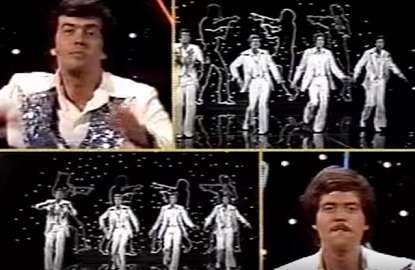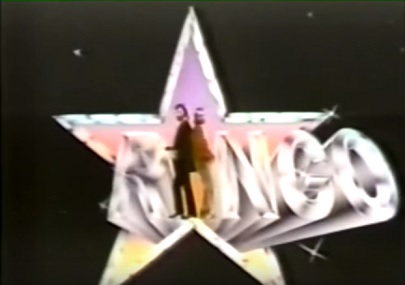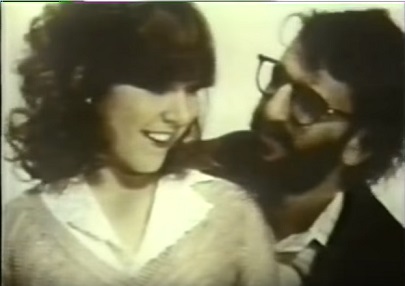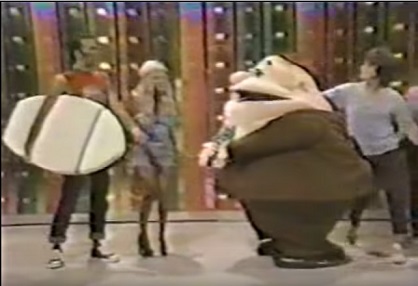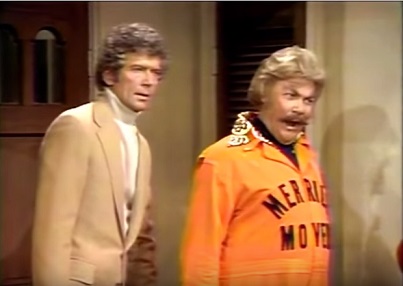
“The Cracker Brothers” (1984)
It seemed appropriate to close out Variety Show Month with a true obscurity, a show that even I, a self-proclaimed expert on the television of my youth, did not know existed until about three weeks ago. 1984’s The Cracker Brothers, which aired once on NBC and then was apparently stuffed in an ammo box and buried deep in the sand somewhere off a highway in Needles, California, was Sid and Marty Krofft’s final, valiant attempt at keeping the variety show genre alive. Half-assed and astonishingly unfunny, it doesn’t breathe new life into the genre so much as set it on fire and cast the ashes into the wind.
Through a deal that could only have involved either a briefcase full of gold bars, or nude photographs of an NBC exec’s wife with the gardener (or perhaps the exec himself with the gardener), the Kroffts managed to score a prime Friday night timeslot for it. Given how little evidence of it remains, it’s safe to assume that The Cracker Brothers’ ratings fell somewhere between a rerun of a bowling competition from 1967 and a test pattern. Not even fondly remembered as an epic flop, like the following year’s Misfits of Science, it just disappeared, never to be spoken of again, like a fart at a garden party.
Even the usually reliable IMDB can offer up no more information than an incorrect airdate and a cast list. Only one recording of it exists on YouTube, a badly done video transfer with just over 1,000 views. That means that only 1,000 people in the entire world, myself included, have experienced this thing, and that’s assuming each view is unique, and not counting those who may have watched it more than once, trying to make sense of it.

If anything positive can be said about The Cracker Brothers, it’s that it has a unique premise, and that’s all that can be said. The gist is that three brothers named Cracker are former window washers who were given their own variety show, despite having no discernible talent for singing, dancing, or comedy. The brothers–Derek (Derek McGrath), the smart one, Mark (Mark King), the dumb one, and Kevin (Kevin Scannell), the tall one (Kevin is also occasionally dumb when the need calls for it, but tallness seems to be his primary defining characteristic–are a bit non-plussed when the show begins, pretending to not understand what they’re doing there any more than the viewer does. They eventually warm up to the idea, though, and decide to put on a heck of a show. The studio audience, after discovering the crisp one hundred dollar bills taped under their seats, delight in their antics.
Most of the show consists of a disjointed series of comedy sketches, all of which lack both endings and punchlines. The brothers, fearful of a tax audit, destroy an IRS employee’s office. Derek plays a character called “The Maharishi,” telling bad jokes in a thick, incomprehensible “Indian” accent. Kevin is a doctor who performs emergency surgery on a clown, and is rewarded for his hard work with a pie in the face. Mark plays a chipmunk who sues Kevin on “The Person’s Court” for chopping down his tree. They mash together E.T. and Gandhi, not in any sort of clever way, but just because apparently the sight of Gandhi crawling out of some bushes and frightening a child (or rather, a grown man dressed like a child) is hysterical (note that this is one of two times in this show that Mahatma Gandhi, the pacifist leader of the movement for Indian independence who was assassinated for his beliefs, is used as a sight gag).
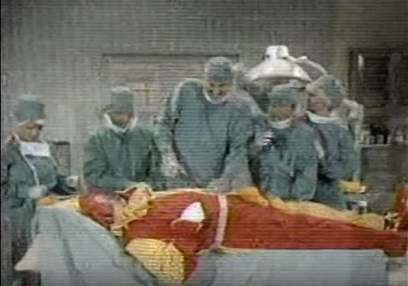
Some of the sketches are introduced by a baby-voiced “Cracker Girl,” who recites her dialogue like she’s reading it off her hand. Everything comes off like it was created by aliens who asked a random Earthling “What is comedy?” and then proceeded to only half-listen to the answer. The grainy, choppy look of the video transfer doesn’t help, making the whole show look like something you’d see in a found footage horror movie. If you watch long enough, eventually you’ll catch a glimpse of a bug crawling out of someone’s mouth, or a scowling girl with long black hair.
The show has the audacity to end with the Crackers being visited in their dressing room by comedy legends Danny Thomas (who looks like he left his limousine running outside the studio), Milton Berle, and Harvey Korman (who, presumably while held at gunpoint, directed this thing), who all tell them how great they were. The childlike Mark dons a top hat, as if embracing his impending stardom.
The Cracker Brothers is the last credit on Mark King’s filmography. Depending on what kind of person you are, that is either poignant or hilarious. Either way, it’s definitely funnier than The Cracker Brothers itself.

It doesn’t seem fair to criticize something that doesn’t appear to be finished. After all, one doesn’t review a play that’s still in dress rehearsal, or rate a movie that doesn’t have a soundtrack yet. Perhaps after the jokes had been added, they would have had something. Not necessarily something good, but at least there would have been something. However, since NBC saw fit to let The Cracker Brothers air as is in a prime time Friday slot (in the fall, nonetheless), rather than burn it off in the middle of summer, I feel better about giving it the hatchet job it richly deserves.
As stated in virtually every review I’ve done for Variety Show Month, it begs the question: why? Who is this for? Where is the audience for a TV show in which actors play regular people who are inexplicably given their own television show? Why cast actors who don’t look alike, and whose chemistry suggests they just met for the first time the morning of filming, to play brothers? The extremely limited amount of information I could find on The Cracker Brothers suggests that, despite one unmitigated disaster after another, despite America collectively saying “Thank you, but no,” Sid and Marty Krofft, bless them, just simply could not let the variety show format go. The quiet, mob hit style disappearance of The Cracker Brothers seemed to do the trick, though. Nevertheless, the Kroffts continued to make baffling decisions, including their very next project, the short-lived Pryor’s Place, a Saturday morning children’s show starring, yes, you guessed it, Richard Pryor.



